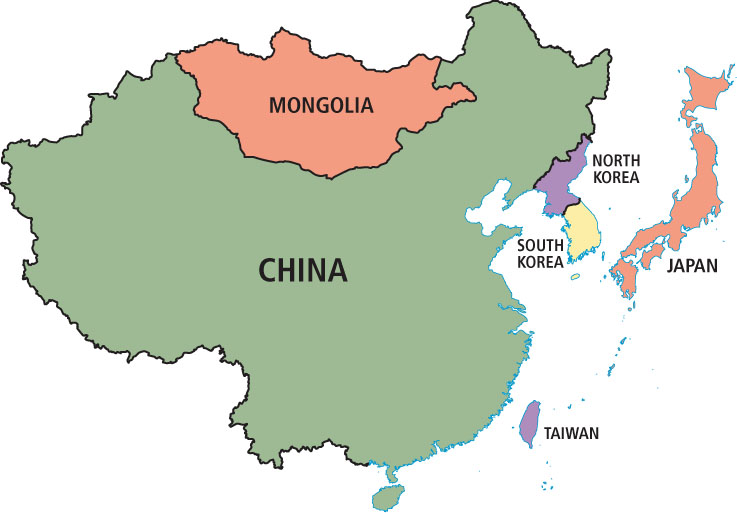9.2 The Geographic Setting
What Makes East Asia a Region?
China is part of the region of East Asia, home to nearly one-fourth of humanity. The vast East Asian territory stretches from the Taklimakan Desert in far western China to Japan’s rainy Pacific coastline, and from the frigid mountains of Mongolia in the north to the tropical landscapes of Hainan Island, China’s southernmost province (see Figure 9.1; see also Figure 9.4B). East Asia (Figure 9.3) is comprised of the countries of China, Mongolia, North Korea, South Korea, Japan, and Taiwan (the last has operated as an independent country since World War II but is claimed by China as a province). These countries are grouped together because of their cultural and historical roots, many of which are in China. Because of China’s great size, historical influence, enormous population, and huge economy, this chapter gives it particular emphasis. Japan, whose large and prosperous economy makes it a major player on the world stage, is also emphasized.

Terms in This Chapter
East Asian place-names can be very confusing to those unfamiliar with East Asian languages. We give place-names in English transliterations of the appropriate Asian language, taking care to avoid redundancies. For example, he and jiang are both Chinese words for river. Thus the Yellow River is the Huang He; and the Long River, also called the Yangtze in English, is the Chang Jiang in China; it is redundant to add the term river to either name. The word shan appears in many place-names and usually means “mountain.”
Pinyin (a spelling system based on Chinese sounds) versions of Chinese place-names are now commonplace. For example, the city once called Peking in English is now Beijing, and Canton is Guangzhou.
The region historically known as Manchuria is here referred to as China’s Far Northeast to emphasize its geographical location. Although China refers to Tibet as Xizang, people around the world who support the idea of Tibetan self-government avoid using that name. This text uses Tibet for the region (with Xizang in parentheses), and Tibetans for the people who live there.